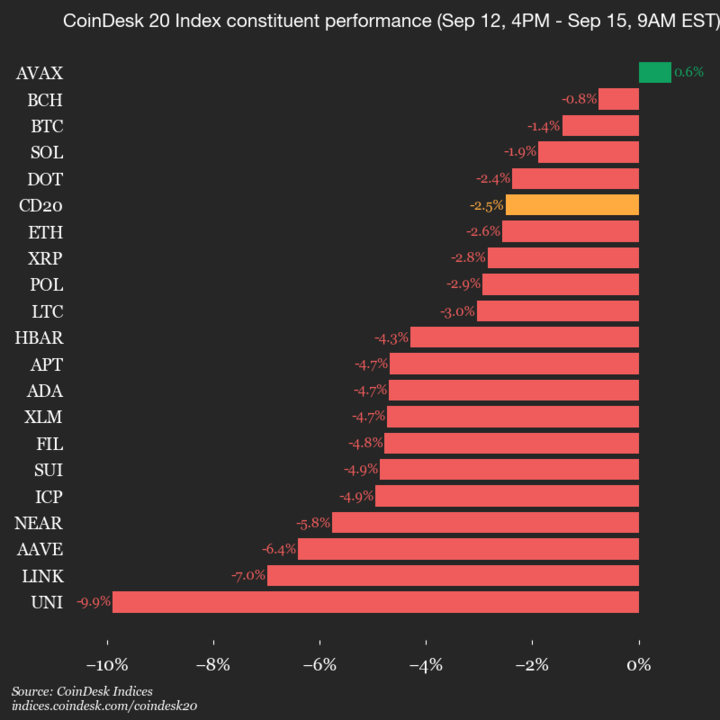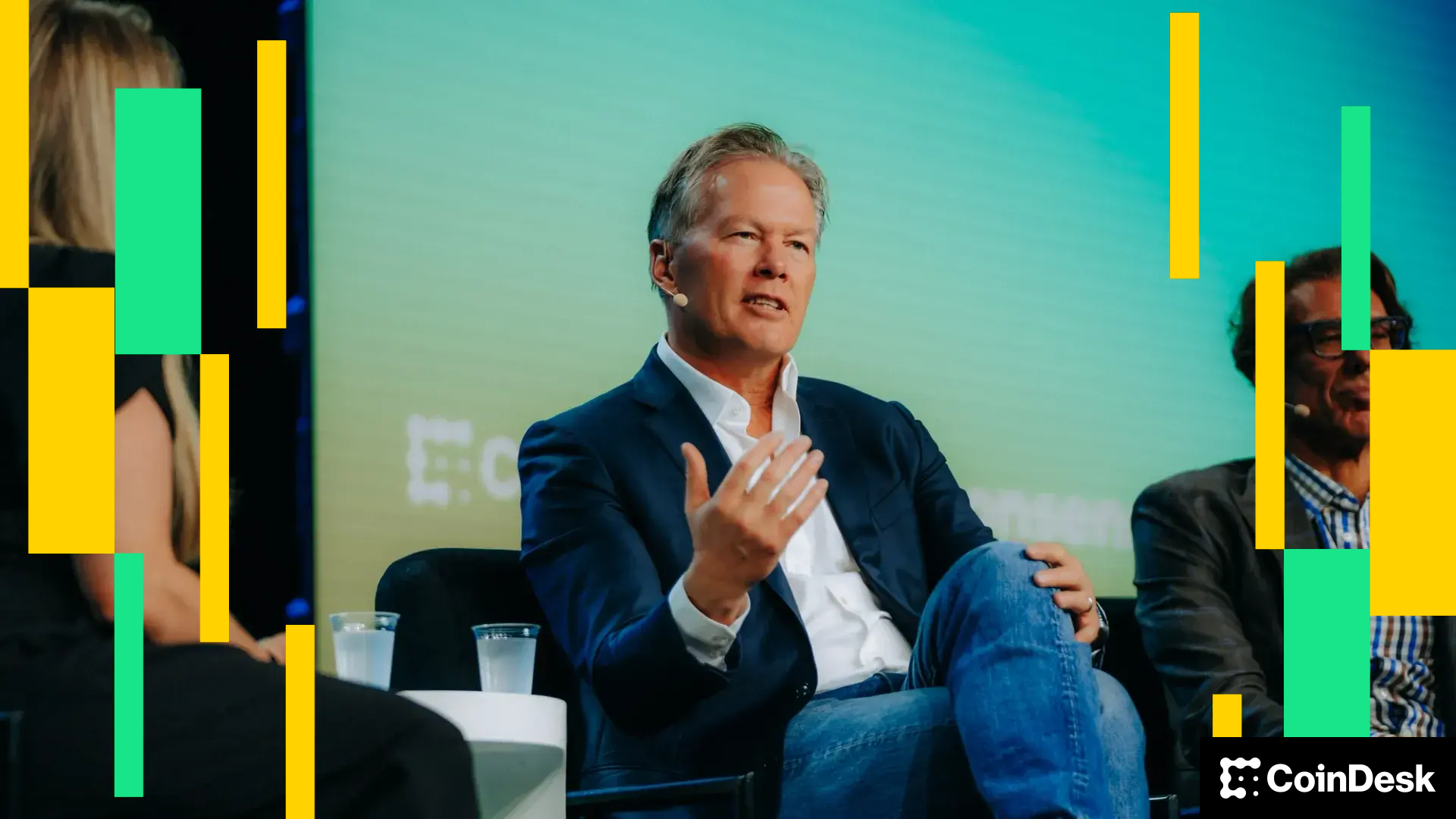Uncategorized
Adam Back Wants CBDCs Dead

If you asked a cypherpunk in the 1990s about their worst-case scenario for the future of money, they probably would have described something very close to Central Bank Digital Currencies (CBDCs). The fight against financial surveillance was fundamental for Bitcoin’s early instigators, and CBDCs go against everything they stand for: privacy, decentralization and individual sovereignty.
In “The Cypherpunk Manifesto” (1993), Eric Hughes argued that cryptography should protect individual freedoms, not be a tool for centralized control. Bitcoin, born out of concerns over financial censorship and systemic instability, represents an alternative to traditional monetary systems. While central banks typically operate with a degree of independence from governments, CBDCs raise questions about financial privacy and the potential for increased state oversight over transactions. As such, CBDCs are the antithesis of Bitcoin.
CBDCs, which are being adopted and trialled throughout the world, have been marketed as a tool for financial inclusion. But, to most Bitcoiners, they are a Trojan horse for reinforcing state control rather than granting individuals true financial ownership. They represent the exact kind of Big Brother system that cypherpunks fought to prevent.
This is why Adam Back — one of the all-time most influential figures in Bitcoin, the inventor of HashCash, and the founder of Blockstream — has been vocal about the dangers of CBDCs and the role of the World Economic Forum’s (WEF) in promoting them. He sees this for what it is: a power-play by global elites, many of whom either misunderstand — or actively oppose — Bitcoin. If Bitcoin was designed to take control away from the state, CBDCs are designed to return it.
According to Back, a speaker at Consensus Hong Kong, CBDCs did not emerge as a natural evolution of money; they were a reactionary move by regulators — a panic response to the threat of private-sector digital currency. He pointed to Facebook’s Libra as the moment that freaked the central banks out, when we caught up for a chat on Google Meets.
«Regulators saw that a company with a billion-plus users could launch corporate electronic cash, and they realized they might lose control. So they tried to get ahead of it with their own government electronic cash,” Back said. “But the problem is, it’s systemically impossible for them to create something that the average person would want to use because they have such control-oriented ideas.»
Adam Back is a speaker at Consensus Hong Kong. Come and experience the most influential event in Web3 and digital assets, Feb.18-20. Register today and save 15% with the code CoinDesk15.
Back isn’t just criticizing CBDCs in theory; he is actively building an alternative. In the past year, Blockstream has launched the Jade Plus hardware wallet — a Bitcoin-only hardware wallet designed for privacy-conscious users, offering an open-source alternative to Ledger and Trezor — and Greenlight, a non-custodial Lightning-as-a-Service platform that simplifies Bitcoin payments for developers.
Blockstream has also expanded Bitcoin’s financial infrastructure with new institutional-grade investment funds, offering regulated Bitcoin-based financial products for high-net-worth investors. They’re also advancing Layer 2 scaling solutions through the Liquid Network, a Bitcoin sidechain enabling faster and confidential transactions. These initiatives build on Blockstream’s long-standing satellite network, which allows Bitcoin transactions without internet access, and its mining operations, which strengthen decentralization.
Together, they reflect a clear vision: a Bitcoin-based financial system independent of traditional banks and centralized authorities.
Some might argue that state involvement in Bitcoin is a growing concern. With Bitcoin ETFs gaining traction, discussions around a U.S. Strategic Bitcoin Reserve, and institutions stockpiling the asset, isn’t there a risk that governments and large entities will gain centralized control over Bitcoin? Isn’t individual self-custody and self-sovereignty the whole point?
Back, a British cryptographer, aged 54, who speaks with a quiet humility that belies his influence, remains unbothered. Moisturized. Happy. In his lane. Focused. Flourishing.
«ETFs and other investment products built around Bitcoin just give people a simpler way to start,» he said, with the cool resolve of a man on a mission.
«Hopefully, they take some physical Bitcoin later and learn how to store it. What matters is that a good number of people hold Bitcoin in its bearer electronic cash format, so it doesn’t become overly concentrated in ETFs or institutions, and that’s still the case today — the majority of it is in individual ownership, some in cold storage, some in exchanges and things like that.»
While it’s hard to to predict exactly how the balance between self-custody and institutional holdings will shift over time, Back believes the broader trend is clear.
He’s been involved in Bitcoin long enough to see how adoption plays out. His well-documented email exchanges with Satoshi Nakamoto suggest he might understand Bitcoin’s trajectory better than anyone else. The way he sees it, Bitcoin’s top-of-the-funnel has widened. Sure, ETFs and institutional funds bring Bitcoin into the mainstream, but ultimately, this just means more people will be pulled into the Bitcoin network. At its core, Bitcoin remains opt-in, censorship-resistant, and free from government interference. CBDCs are the exact opposite.
Currently, 44 countries are at the CBDC pilot stage, according to a tracker from the Atlantic Council. Some claim to preserve privacy, but the reality is that these are poorly veiled efforts to maintain centralized power over money. For a while, the push for state-backed digital currencies seemed inevitable — until political opposition in the U.S. turned it into a battleground issue. Reflecting the sharp Republican turn against CBDCs in the last 18 months, Trump recently announced he would ban the development of CBDCs in the U.S.
Back points this out as a sign that the tide is shifting in favor of Bitcoin. «A number of people in the Trump cabinet are Bitcoin-enthusiasts with relevant experience, so perhaps we’ll see an improvement because it’s partly the participants to date that would probably have preferred that Bitcoin didn’t exist,” he said.
He referenced the former SEC Chair Gary Gensler, who, despite his background teaching blockchain at MIT, took an aggressive stance against the industry. “Hopefully there will be some more common sense and forward-looking regulations and recognition of individual rights to self-sovereignty,” Back said.
Financial surveillance
For Back, he doesn’t just want Bitcoin to win, he wants CBDCs to die. And he believes CBDCs aren’t just a monetary issue — they’re part of a broader agenda of financial surveillance, social credit systems, and state control. “The social media interference in elections in the U.S. and expression of interest in CBDCs in Europe where they’re clearly envious of Chinese social credit scores and things like that which are very dystopian, some of the things the WEF has been coming out with.. They really do not sound good.»
The WEF, in particular, has been leading the charge on CBDCs and other centralized control mechanisms. «I mean, they’ve generally been in favor of all kinds of illiberal things like CBDCs and loss of individual men in power. I mean, they will come out with trial balloons that just sound horrendous and then delete their own tweets.»
He’s not wrong. The WEF has a history of floating controversial ideas, and scrubbing them when the backlash hits. As just one example, in 2021, they tweeted that the pandemic was “quietly improving cities” by reducing air pollution. The suggestion that the lockdowns were a net positive for the environment was met with outrage, so WEF deleted the tweet.
Blockstream is betting that high-net-worth individuals and institutions won’t want their assets trapped in a WEF-endorsed CBDC system controlled by centralized entities. That’s why they’ve launched a suite of institutional-grade Bitcoin funds designed for those looking to preserve their wealth in a system that cannot be arbitrarily manipulated. Recent events have only reinforced why this matters so much. The collapse of FTX, Celsius, and other crypto companies in 2022, has further eroded trust in centralized institutions, whether in traditional finance or crypto.
Back, however, is nothing like Sam Bankman-Fried, the disgraced FTX founder who cared little for individual privacy and was proudly anti-decentralization. He is also nothing like Alex Mashinsky, the Celsius CEO who recklessly gambled with user funds. Back is a cypherpunk continuing to execute on the master plan to ensure that Bitcoin is rolled out exactly as Satoshi intended: as a decentralized, trustless, and censorship-resistant monetary network.
For him, this is more than just a battle between Bitcoin and CBDCs. It’s about freedom. «It’s a renaissance for cypherpunk thinking,» Back told me, explaining that once people are drawn into Bitcoin, they start to grasp its deeper implications, and they see what it means for privacy, sovereignty, and control. He added that when the original Cypherpunk Manifesto was written in the 1990s, its authors may not have fully anticipated how deeply digital technology would eventually permeate every aspect of our lives.
“So in a way, the [Manifesto’s] concerns are even more pressing now because everything is online,» he said, laser eyes twinkling.
Uncategorized
CoinDesk 20 Performance Update: Index Drops 2.5% as Nearly All Constituents Decline

CoinDesk Indices presents its daily market update, highlighting the performance of leaders and laggards in the CoinDesk 20 Index.
The CoinDesk 20 is currently trading at 4248.74, down 2.5% (-109.09) since 4 p.m. ET on Monday.
One of 20 assets is trading higher.

Leaders: AVAX (+0.6%) and BCH (-0.8%).
Laggards: UNI (-9.9%) and LINK (-7.0%).
The CoinDesk 20 is a broad-based index traded on multiple platforms in several regions globally.
Uncategorized
Pantera-Backed Solana Treasury Firm Helius Raises $500M, Stock Soars Over 200%

Helius Medical Technologies (HSDT) announced on Monday it’s raising more than $500 million in a private financing round to create a Solana-focused treasury company.
The vehicle will hold SOL, the native token of the Solana blockchain, as its reserve asset and aims to expand to more than $1.25 billion via stock warrants tied to the deal, the press release said.
The financing was led by Pantera Capital and Summer Capital, with participation from investors including Animoca Brands, FalconX and HashKey Capital.
Shares of the firm rallied over 200% above $24 in pre-market trading following the announcement. Solana was down 4% over the past 24 hours.
The firm is joining the latest wave of new digital asset treasuries, or DATs, with public companies pivoting to raise funds and buy cryptocurrencies like bitcoin (BTC), ether (ETH) or SOL.
Helius is set to rival with the recently launched Forward Industries (FORD) with a $1.65 billion war chest backed by Galaxy Digital and others. That firm confirmed on Monday that has already purchased 6.8 million tokens for roughly $1.58 billion last week.
Helius’ plan is to use Solana’s yield-bearing design to generate income on the holdings, earning staking rewards of around 7% as well as deploying tokens in decentralized finance (DeFi) and lending opportunities. Incoming executive chairman Joseph Chee, founder of Summer Capital and a former UBS banker, will lead the firm’s digital asset strategy alongside Pantera’s Cosmo Jiang and Dan Morehead.
«As a pioneer in the digital asset treasury space, having participated in the formation of the strategy at Twenty One Capital (CEP) with Tether, Softbank and Cantor, Bitmine (BMNR) with Tom Lee and Mozayyx as well as EightCo (OCTO) with Dan Ives and Sam Altman, we have built the expertise to set up the pre-eminent Solana treasury vehicle,» Cosmo Jiang, general partner at Pantera Capital, said in a statement.
«There is a real opportunity to drive the flywheel of creating shareholder value that Michael Saylor has pioneered with Strategy by accelerating Solana adoption,» he added.
Read more: Solana Surges as Galaxy Scoops Up Over $700M Tokens From Exchanges
Uncategorized
American Express Introduces Blockchain-Based ‘Travel Stamps’

American Express has introduced Ethereum-based ‘travel stamps’ to create a commemorative record of travel experiences, as part of the firm’s revamped travel app.
The travel experience tokens, which are technically NFTs (ERC 721 tokens), are minted and stored on Coinbase’s Base network, said Colin Marlowe , VP, Emerging Partnerships at Amex Digital Labs.
The travel stamps, which can be collected anytime a traveler uses their card, are not tradable NTF tokens, Marlowe explained, and neither do they function like blockchain-based loyalty points – at least for the time being.
“It’s a valueless ERC-721, so technically an NFT, but we just didn’t brand it as such. We wanted to speak to it in a way that was natural for the travel experience itself, and so we talk about these things as stamps, and they’re represented as tokens,” Marlowe said in an interview.
“As an identifier and representation of history the stamps could create interesting partnership angles over time. We weren’t trying to sell these or sort of generate any like short term revenue. The angle is to make a travel experience with Amex feel really rich, really different, and kind of set it apart,” he said.
The Amex travel app also includes a range of tools for travels and Centurion Lounge upgrades, the company said.
-

 Business11 месяцев ago
Business11 месяцев ago3 Ways to make your business presentation more relatable
-

 Fashion11 месяцев ago
Fashion11 месяцев agoAccording to Dior Couture, this taboo fashion accessory is back
-

 Entertainment11 месяцев ago
Entertainment11 месяцев ago10 Artists who retired from music and made a comeback
-

 Entertainment11 месяцев ago
Entertainment11 месяцев ago\’Better Call Saul\’ has been renewed for a fourth season
-

 Entertainment11 месяцев ago
Entertainment11 месяцев agoNew Season 8 Walking Dead trailer flashes forward in time
-

 Business11 месяцев ago
Business11 месяцев ago15 Habits that could be hurting your business relationships
-

 Entertainment11 месяцев ago
Entertainment11 месяцев agoMeet Superman\’s grandfather in new trailer for Krypton
-

 Entertainment11 месяцев ago
Entertainment11 месяцев agoDisney\’s live-action Aladdin finally finds its stars





